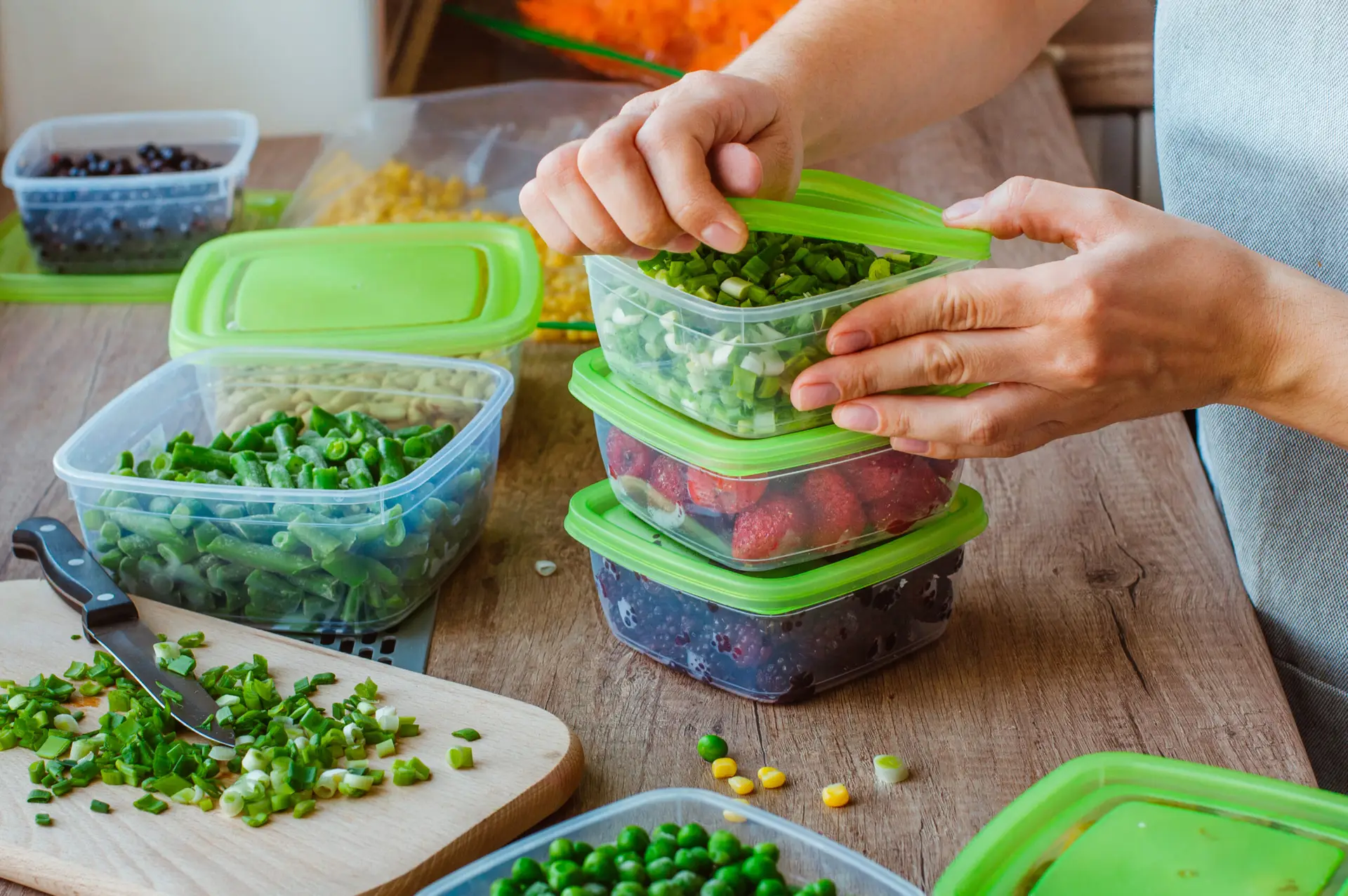Containers
There are a few cardinal rules when it comes to storing produce for optimal shelf life. The very first thing we recommend is glass containers. If you can swing it, go to your local thrift store, or wherever you get cheap stuff and buy a bunch of mason jars and glass food storage containers.
Glass containers help reduce the amount of air and water that enters your food.
Vegetables & Refrigerated Fruit
Slime, we don’t like it. For anything that tends to get slimy with time (think greens, peppers, onions, cut cucumbers, berries), store them in your glass containers with a paper towel or thin kitchen rag to absorb extra moisture. Citrus fruits last longer in the refrigerator than on the counter!
Naked carbs are simple carbohydrates eaten without any other foods that aid in slowing down digestion. We dress carbs up by choosing fiber-rich carbohydrates and adding a bit of fat and/or protein. For example, instead of having a solo apple, serve it with some nut butter; have avocado instead of jam on toast; and pair plain pasta with some form of meat, olive oil or cheese.
As you’ll learn below, fat and protein are more complex structures that require more energy and time to digest, resulting in a smaller glucose spike.
Root Vegetables
Most root vegetables do best in water. This means carrots, radishes, turnips, beets, peeled ginger, and turmeric. Slice, dice, and stuff them in your jar/container and fill it to the top with water. Spuds — potatoes — are best left in your cold dark spaces, though.
Herbs
Ahh, our precious herbs that wilt in 1.2 seconds. Herbs love humidity, so give ’em what they want by sticking the bunch in a mason jar and covering it with a sandwich bag or saran wrap. Seal the bag with a rubber band and store in your fridge door (it’s a bit warmer in the door, they like that). The only exception to this is scallions and basil; keep those in water at room temp .
Pro tip: bought more herbs than you can handle? Flip them upside down and hang to dry or freeze in cooking oil (see below).
Exceptions
There are exceptions, of course! Eggplant, celery, and lettuce like to be wrapped in little paper towel burritos. Tomatoes should always be on the counter unless already cut.
Utilize the Freezer
We love the use of a freezer here. It’s easy to forget all the good that a freezer can do. Here are my favorite ways to maximize that icebox:
Grains — Freeze extra grains like quinoa, farro, or rice in resealable bags and thaw them in cold water. Freeze flat and store horizontally.
Blanched Greens — Form blanched, cooled, and roughly chopped greens into balls (squeeeeeze out all the liquid) and freeze them on a baking sheet then transfer to a bag. They can instantly upgrade grain bowls, omelets, and soups.
Bread — I really can’t stand buying good gluten-free bread just to have it go stale in a day. Pre-slice your loaves and freeze them for easy peasy toasting.
Utilize Ice Trays — Minced herbs in cooking oil, juices, nut milk, wine, mashed bananas, almost anything can be added to ice trays and saved for later.
Want more ways to optimize your health and wellness?
Connect with one of our expert health coaches! Whether you need a gut and liver detox, or have been advised to implement a nutrition plan like low FODMAPs or Keto - our Health Coaches have the resources you need. We only use the latest science and supplements to help you get the nutrition you need from the inside out.






